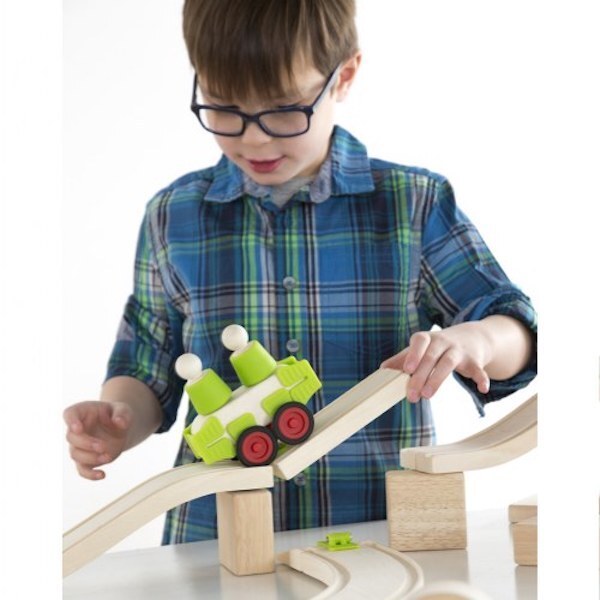Experiment Like a Scientist
Teach Your Child How to Predict, Measure, Compare and Record Like a Scientist

Did you know math and literacy instruction inspire and increase the quality of young children’s play? In fact, children naturally explore and engage with content areas such as math and science during their free play.
In many preschool settings, science learning experiences are rarely offered, and when they are, they are all too often stand-alone activities that do not foster deep engagement and learning. As you’ve come to see, Connect4Learning makes meaningful connections among all the four domains, providing rich learning experiences for each.
But how can children continue interdisciplinary learning while at home? Share the following activity with families that blends science, math and literacy learning—all in one!
Science Experiment for Families
Part of science experimentation is learning how to predict, measure and compare length and distance. Another important step is to record the measurements (or data) like a real scientist! Try this fun experiment to give your preschooler a chance to practice these important science skills while also sharpening their math and literacy skills.
Gather and label. Get a piece of paper. At the top, make three columns. Label the first column Vehicle; label the second Bottom; and label the third Top.
Stack. Make a stack of blocks or books, several inches high. Lean a sturdy piece of cardboard or other stiff material against it, so it makes a ramp.
Gather more materials. Get several small vehicles (cars, trucks, small airplanes, motorcycles, etc.) and a ruler, yardstick or measuring tape.
Predict. Ask your child to place a vehicle at the bottom of the ramp and predict how far it will roll when given a gentle push.
Take action and measure. Have your child push the vehicle then measure how far it traveled.
Record data. On the paper with the columns, write (or ask your child to write) the numeral 1 in the Vehicle column. In the Bottom column, write the distance Vehicle 1 traveled when pushed from the bottom of the ramp.
Compare. Ask your child to compare his prediction with the actual distance.
Predict again. Ask your child to predict how far that same vehicle will travel when it starts at the top of the ramp.
Take action and measure again. Have her place the vehicle at the top of the ramp and let it go. Measure the distance it traveled from the bottom of the ramp.
Record data again. On the paper with the columns, write (or ask your child to write) the distance Vehicle 1 traveled when pushed from the top of the ramp
Compare again. Ask your child to compare her prediction with the actual distance. Next, compare the distance the vehicle traveled when starting at the top of the ramp to the distance when it was pushed from the bottom of the ramp. Ask why she thinks it went farther when it started at the top of the ramp.
Repeat. Do these same steps with other vehicles or several times with the same vehicle. Write the numeral 2 on the paper in the Vehicle column for the second vehicle used, the numeral 3 for the third vehicle used, and so on. Again write the distances each vehicle travels when starting at the bottom or top of the ramp. Remember to ask your child to predict the distance in advance, and then compare his prediction with the actual distance. Record the actual distance in the correct column on the paper.
Observe. Ask your child to comment on what he observed through this experiment, and share your observations, too. Discussion points might include the following:
- How close were the predictions to the actual distances?
- What do you think made the vehicles go farther?
- How do you know?



